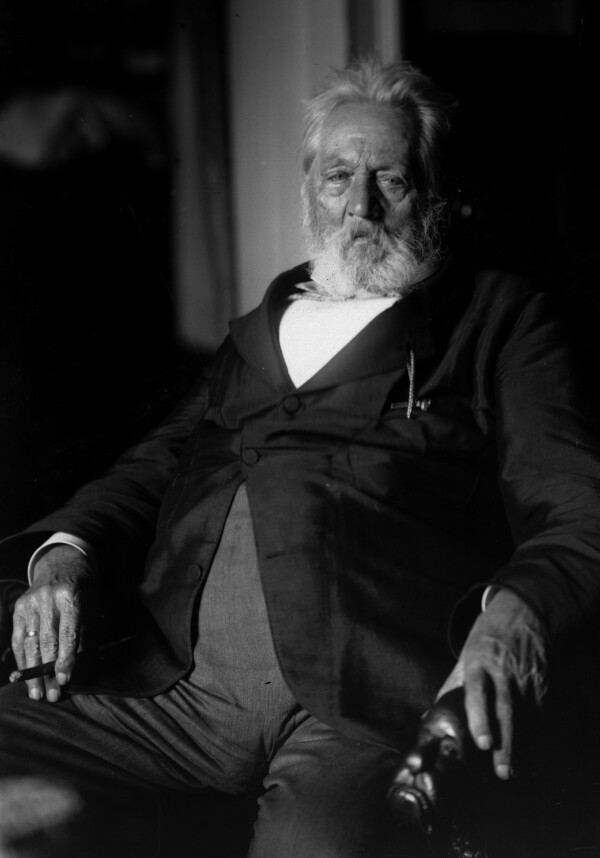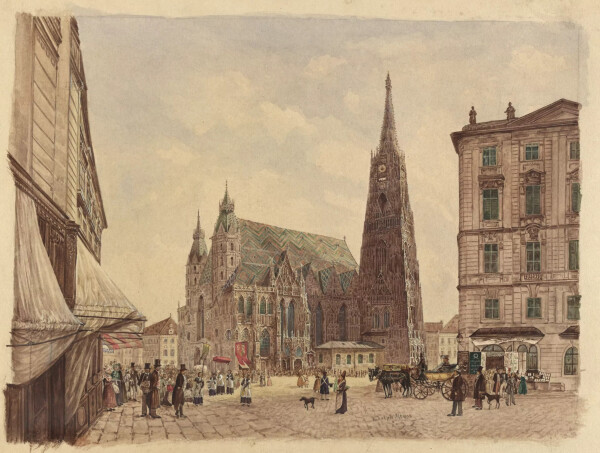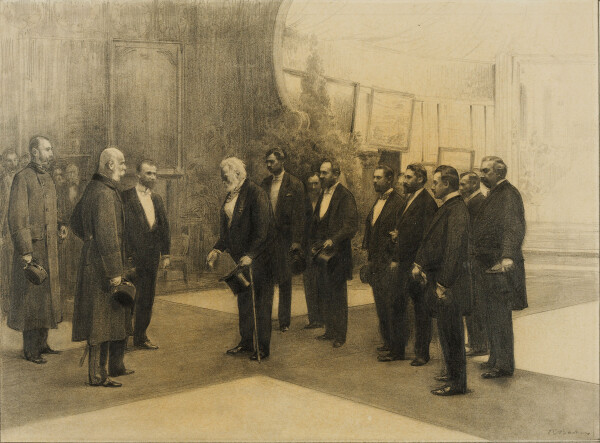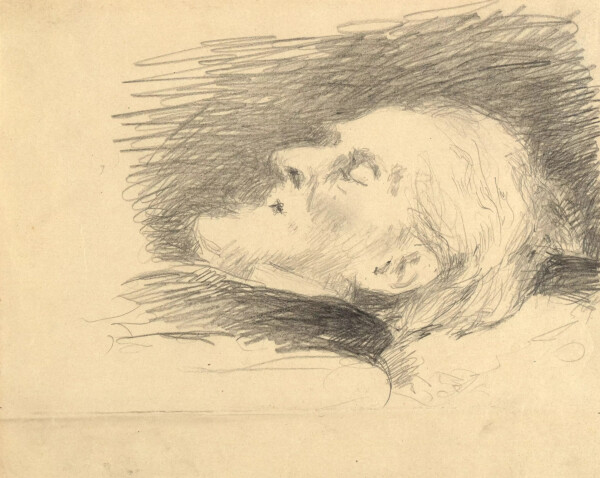Rudolf Alt

Rudolf Alt photographed by Ferdinand Schmutzer, 1899, Austrian National Library, Vienna
© Picture Archives and Graphics Department, Austrian National Library

Rudolf von Alt: St. Stephen's Cathedral, 1832, Wien Museum
© Wien Museum
The watercolor painter Rudolf von Alt specialized in landscapes and interiors. In 1892, the successful artist was knighted for his accomplishments. In 1897, when Rudolf von Alt was already 85 years old, he was appointed honorary president of the newly founded Secession. He remained open to modern advancements in the arts and continued to develop his personal style throughout his life.
Rudolf Alt was born in Vienna on 28 August 1812. He was the son of the painter Jakob Alt, who specialized in views. He accompanied his father on various working trips from a young age and assisted him in the creation of his city views and lithographs. From 1826, Alt attended the Historic School of the Vienna Academy, where he was taught by the landscape painter Joseph Mößmer. Rudolf Alt was married twice. In 1841, he wedded Hermine Oswald, who died two years later. He then married Berta Malitschek, who was originally from Troppau, in 1846.
After completing his formal education, Rudolf Alt went on several study trips. The works he created during his first trip to Italy in 1830 betray the first major development in Alt’s style of painting. He abandoned the detailed style he had adopted from his father but remained true to Naturalism. Alt specialized in landscapes and interiors. He created more than 1000 watercolors during his lifetime. His most important works include his depictions of St. Stephen’s Cathedral in Vienna, countless images for perspective boxes commissioned by Crown Prince Ferdinand and the interior depictions of Hans Markart’s studio.
Rudolf Alt’s style changed again in the 1840s. Open lines gave his watercolors an almost sketch-like appearance. The artist focused on the reproduction of light and atmosphere. His style of painting thus gradually approximated modern Impressionist principles. Alt’s oeuvre was admired by his contemporaries and the artist received many distinctions: In 1848, he was invited to become a member of the Academy of Fine Arts, where he was appointed professor in 1879. In 1892, Rudolf Alt was knighted, thus earning the right to call himself Rudolf von Alt.

Rudolf Bacher: Emperor Franz Joseph visits the first exhibition of the Vienna Association at the Gartenbaugesellschaft, 1898, Wien Museum
© Wien Museum

Tina Blau: Rudolf von Alt on his deathbed, 1905, Wien Museum
© Wien Museum
Rudolf von Alt and the Vienna Secession
As an artist, Rudolf von Alt never stood still. He was always interested in new developments in the world of arts and was permanently trying to make sure that his own works were keeping up with the times. This explains why, in 1897, Alt left the Vienna Künstlerhaus and co-founded the Association of Austrian Artists Vienna Secession together with Gustav Klimt, Joseph Maria Olbrich, Josef Hoffmann and many other artists of the younger generation. Klimt became the president of the newly founded artists’ association, while Rudolf von Alt, then already 85 years old, was appointed its honorary president. “It must be one of the few joys my life still has to offer me that the new artists’ association, Association of Austrian Artists, have chosen me as their honorary president”, he wrote to Carl Moll at the time.
Despite his advanced age, Alt was by no means a typical representative of the older generation of classic, academically trained painters. On 1 March 1898, Emperor Franz Joseph I received a delegation of the Secession, including Rudolf von Alt, Gustav Klimt and Carl Moll. The purpose of this interview was to give the artists an opportunity to deliver an invitation to the first exhibition of the Secession. The newspapers reported that when the Emperor asked the delegation about the reasons for the founding of the new artists’ association, Rudolf Alt replied as follows: “We are still young enough, Your Majesty, that we can make a fresh start.” The young artists of the Secession appreciated Rudolf von Alt’s open-minded approach to modern art and greatly respected him for it.
After the first exhibition of the Secession closed in 1898, Gustav Klimt presented Alt with five golden laurel leaves as a tribute on behalf of all members of the association.
On the occasion of Alt’s 88th birthday in 1900, Ver Sacrum dedicated a special edition to the artist, for which Klimt designed a dedication page. With this gesture, the young artists expressed their reverence for the old painter who embodied the concept of eternal progress and infinite artistic reinvention. For his 90th birthday in 1902, the association once more honored the artist, whom Ludwig Hevesi had lovingly dubbed “age-old master”, with a collective exhibition of his works.
Rudolf von Alt died on 12 March 1905. Rudolf Bacher, then president of the Secession, delivered the eulogy for the deceased honorary president. The funeral was attended by many fellow Secession members, including Gustav Klimt, Carl Moll and Paul Bacher, as well as numerous painters of the older generation. An auction of 432 objects from Rudolf von Alt’s estate was held at the Miethke Gallery in 1906.
Literature and sources
- Wien Geschichte Wiki. Rudolf von Alt. www.geschichtewiki.wien.gv.at/Rudolf_Alt (02/07/2022).
- Ludwig Hevesi: Acht Jahre Sezession (März 1897–Juni 1905). Kritik – Polemik – Chronik, Vienna 1906, S. 4-6, S. 486-489.
- Neue Freie Presse, 21.06.1898, S. 6.
- Die Zeit, 15.03.1905.
- N. N.: Die Secession beim Kaiser, in: Das Vaterland. Zeitung für die österreichische Monarchie, 11.03.1898, S. 5.
- Monika Fritz: Brief Rudolf von Alt an Carl Moll, am 8.4.1897, Privatbesitz, in: Der Wiener Maler Carl Moll. Diss. phil. Universität Innsbruck, Innsbruck 1962, S. 124.
- Walter Koschatzky (Hg.): Rudolf von Alt. 1812-1905, Ausst.-Kat., Albertina (Vienna), 29.02.1984–29.04.1984, Vienna 1984.

